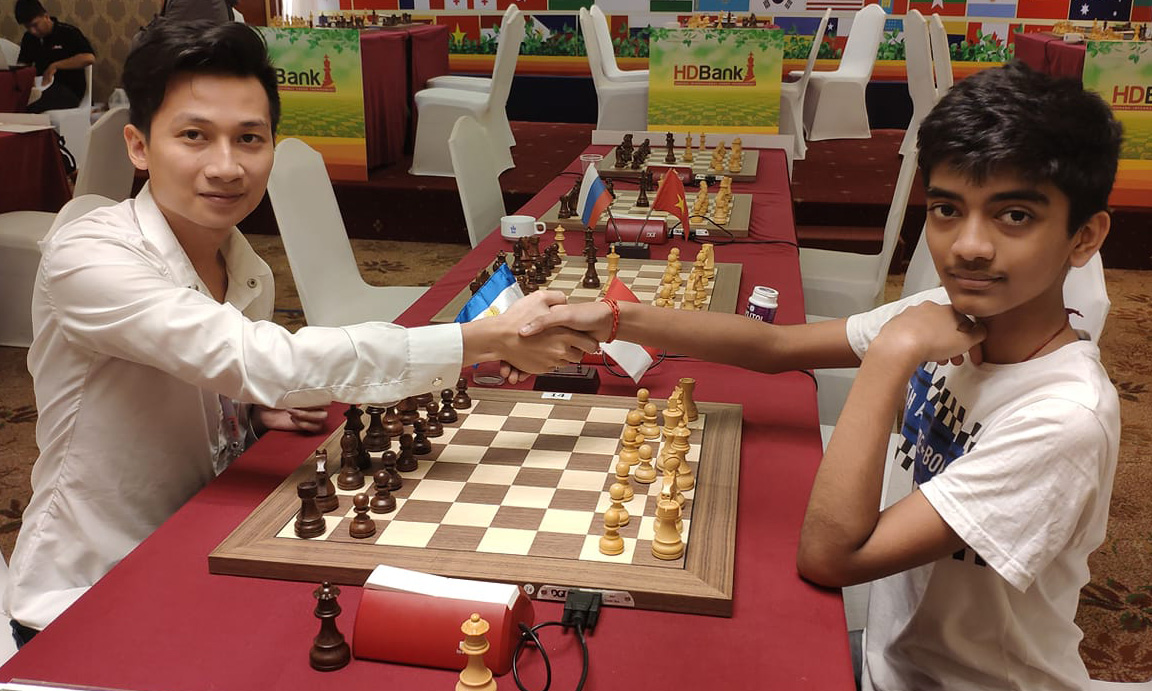GM Olexandr Bortnyk arrived at the 2025 US Masters in Charlotte as one of the most dangerous rapid starters in the field. True to reputation, he opened the event with two convincing wins. Then, just as the tournament began to heat up, his name suddenly disappeared from the Round 3 pairings. No game played. No draw recorded. Only a mysterious “U” on the standings sheet, meaning an unexcused absence.
His withdrawal quickly became a talking point among players and fans following the early rounds. A strong grandmaster winning his first two games only to drop out is not something that happens often. To understand the situation, I contacted the Charlotte Chess Center, the organizer of the tournament. Their reply to Attacking Chess was short but clear: “GM Bortnyk needed to withdraw due to personal reasons.” The message came directly from Grant Oen, Director of Events at the CCC.
No further details were provided, and in U.S. tournaments, it is standard practice to protect a player’s privacy when dealing with personal matters. That means the real reason will likely remain unknown, at least for now. Still, the withdrawal had an immediate impact on the standings. Bortnyk, starting with two points out of two, became stuck at 2.0 while other leaders continued to push ahead in a highly competitive field full of motivated grandmasters and top juniors seeking norms.
Even without one of its strongest and most recognizable competitors, the 2025 US Masters delivered a fierce opening stage. With three rounds completed, the leaderboard quickly took shape.
Top Performers After Three Rounds
Three rounds into the tournament, nine players emerged with a perfect 3.0 out of 3 score. At the top stands GM Jeffery Xiong, the highest rated American in the field, who defeated GM Balaji Daggupati on board one in Round 3. His start is a statement, especially considering the rating strength of the event.
Joining him with perfect scores are several grandmasters who are familiar names on the U.S. circuit. GM Andrew Hong also moved to 3.0 by outplaying GM Magesh Panchanathan. GM Illia Nyzhnyk swept his first three boards in impressive style, finishing Round 3 with a clean victory over IM Samrug Narayanan.
Other players with perfect starts include GM David Brodsky, GM Razvan Preotu, GM Koustav Chatterjee, GM Sergey Erenburg, IM Erick Zhao, and IM Almas Rakhmatullaev. The group is a mix of experienced professionals and ambitious young players who thrive in norm-heavy events like the US Masters.
Immediately behind them sits a massive pack of players on 2.5. This group includes familiar elite names such as GM Awonder Liang, GM Alexander Donchenko, Vietnam’s GM Tuan Minh Le, GM Jianchao Zhou, GM Benjamin Bok, GM Guillermo Vazquez, and GM Aditya Samant. Each of them won or drew their Round 3 games and remain well within striking distance of the leaders.
Among the rising American talents, IM Carissa Yip continued her strong performance by drawing GM Aditya Samant on board four. IM Tanitoluwa Adewumi held GM Jose Gabriel Cardoso to a draw as well, reinforcing the depth of strength in the junior field.
Highlights From Round 3
The third round featured twenty tightly contested top boards. On board one, GM Jeffery Xiong demonstrated perfect technique in converting a slightly better position into a full point against GM Balaji Daggupati.
GM Andrew Hong overpowered GM Magesh Panchanathan on board two, showing sharp preparation and clean middlegame execution.
GM Illia Nyzhnyk, known for his aggressive style, dismantled IM Samrug Narayanan in a convincing display.
Meanwhile, IM Erick Zhao delivered one of the biggest surprises of the round. Despite facing the higher rated IM Liam Putnam, Zhao won convincingly, pushing him to 3.0 and keeping him firmly in the leading group.
GM David Brodsky and GM Sergey Erenburg also won their games, showing why they are considered two of the most stable performers in American norm events.
Vietnam’s GM Tuan Minh Le took a smooth victory on board eighteen against FM Ryan Sun, moving himself into the 2.5 point chasing pack.
The mix of decisive games and hard fought draws showed how competitive the event is. Even players starting with two wins found themselves fighting for equality by the midgame. This balance of rating strength makes the US Masters one of the toughest open tournaments held annually in the United States.
What the US Masters Represents
The 2025 US Masters is more than just another strong tournament on the American chess calendar. It is an official US Chess National Championship, a FIDE Circuit event, and a major opportunity for GM and IM norms. Held from November 26 to 30 at Hilton Charlotte University Place, the tournament attracts elite grandmasters, young prodigies, and ambitious international competitors.
The conditions are designed to support professional-level play. The tournament offers free internet, free parking, and two partnered hotels located within walking distance. The event runs alongside the NC Open and follows the successful Fall GM and IM Norm Invitational held just days earlier.
Players must meet strict eligibility criteria. Only titled players, national masters, and juniors with high established ratings are allowed to compete. For many young players, this event is one of the few annual opportunities in the United States to face a large field strong enough for norms. With a guaranteed prize fund of 25,000 dollars, multiple top class competitors, and the ability to earn norm performances, tension remains high from round one to round nine.
Looking Ahead
While GM Olexandr Bortnyk’s early withdrawal is unfortunate and leaves fans with unanswered questions, it does not overshadow the momentum of the competition. With several perfect scores after round three and a long list of strong contenders on 2.5 and 2.0, the 2025 US Masters is shaping up to be one of the most dramatic editions yet.
The fight for first place, norm opportunities, and major prizes will intensify as the field enters the middle rounds. With a deep pool of top American grandmasters, rising internationals, and fearless juniors, every board promises tension and ambition.
As the tournament progresses, one thing is clear. Even without one of its star players, the US Masters remains a defining battleground for the future of American and global competitive chess.

I’m Xuan Binh, the founder of Attacking Chess, and the Deputy Head of Communications at the Vietnam Chess Federation (VCF). My chess.com and lichess rating is above 2300. Send me a challenge or message via Lichess. Follow me on Twitter (X) or Facebook.

